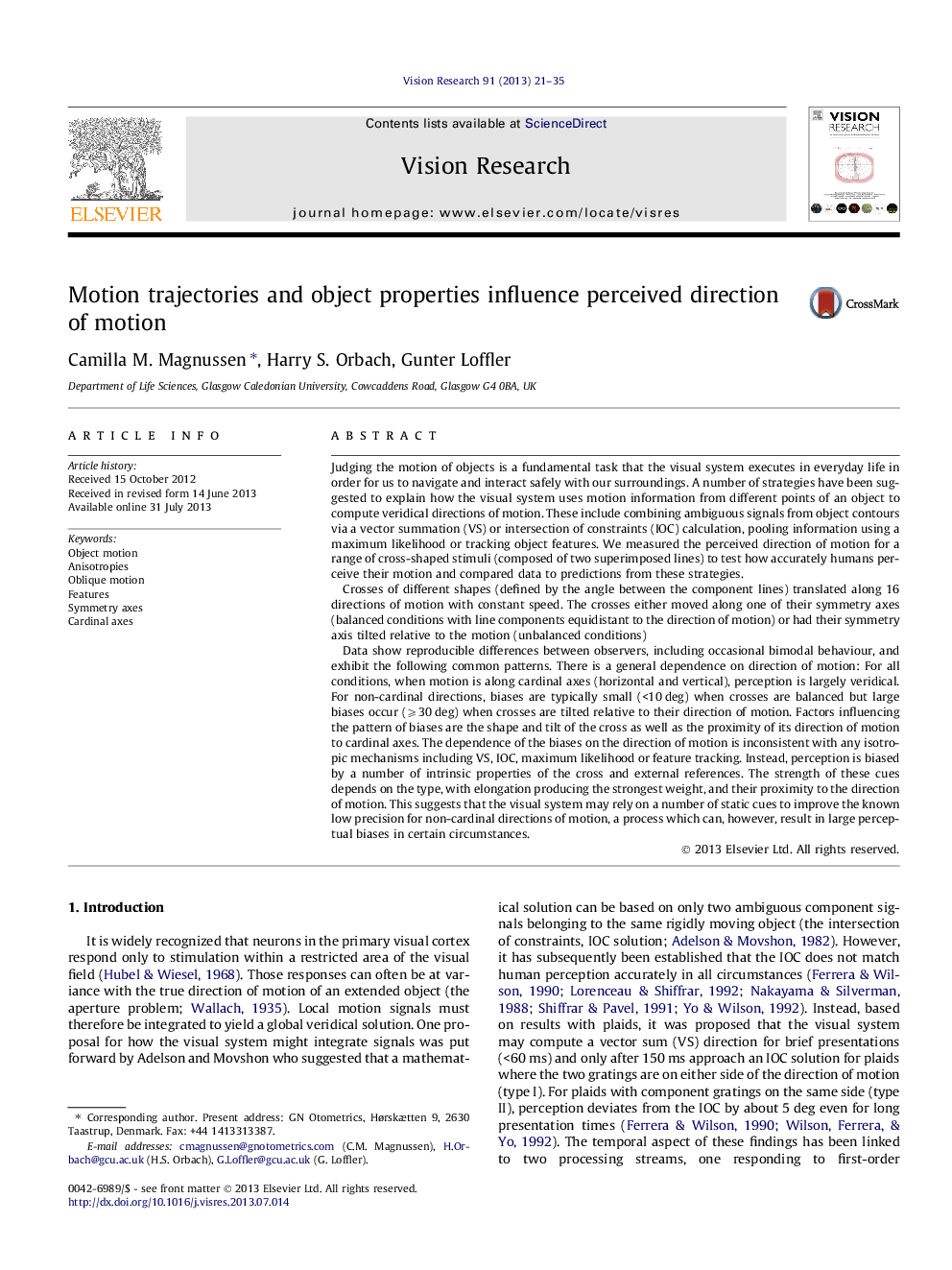| Article ID | Journal | Published Year | Pages | File Type |
|---|---|---|---|---|
| 4033743 | Vision Research | 2013 | 15 Pages |
•We measured the perceived direction of motion of two superimposed lines (crosses).•Perception is typically veridical when motion is along cardinal axes.•Substantial biases (⩾30 deg) can occur for non-cardinal axes.•Biases are influenced by the shape, tilt and attraction to cardinal axes.•This suggests that a number of static cues influence motion along non-cardinal axes.
Judging the motion of objects is a fundamental task that the visual system executes in everyday life in order for us to navigate and interact safely with our surroundings. A number of strategies have been suggested to explain how the visual system uses motion information from different points of an object to compute veridical directions of motion. These include combining ambiguous signals from object contours via a vector summation (VS) or intersection of constraints (IOC) calculation, pooling information using a maximum likelihood or tracking object features. We measured the perceived direction of motion for a range of cross-shaped stimuli (composed of two superimposed lines) to test how accurately humans perceive their motion and compared data to predictions from these strategies.Crosses of different shapes (defined by the angle between the component lines) translated along 16 directions of motion with constant speed. The crosses either moved along one of their symmetry axes (balanced conditions with line components equidistant to the direction of motion) or had their symmetry axis tilted relative to the motion (unbalanced conditions)Data show reproducible differences between observers, including occasional bimodal behaviour, and exhibit the following common patterns. There is a general dependence on direction of motion: For all conditions, when motion is along cardinal axes (horizontal and vertical), perception is largely veridical. For non-cardinal directions, biases are typically small (<10 deg) when crosses are balanced but large biases occur (⩾30 deg) when crosses are tilted relative to their direction of motion. Factors influencing the pattern of biases are the shape and tilt of the cross as well as the proximity of its direction of motion to cardinal axes. The dependence of the biases on the direction of motion is inconsistent with any isotropic mechanisms including VS, IOC, maximum likelihood or feature tracking. Instead, perception is biased by a number of intrinsic properties of the cross and external references. The strength of these cues depends on the type, with elongation producing the strongest weight, and their proximity to the direction of motion. This suggests that the visual system may rely on a number of static cues to improve the known low precision for non-cardinal directions of motion, a process which can, however, result in large perceptual biases in certain circumstances.
